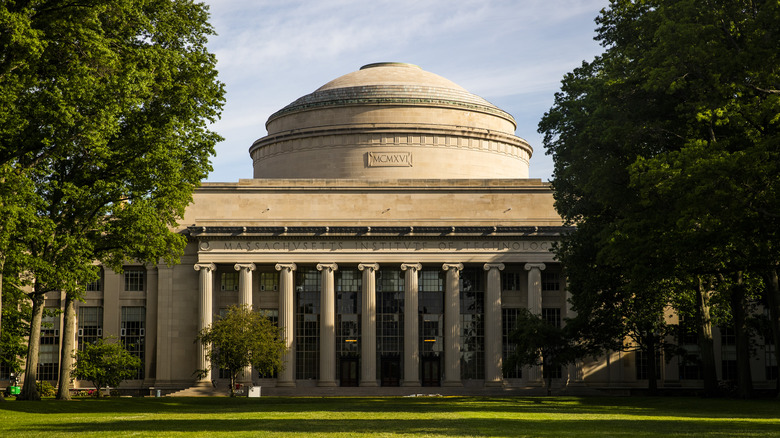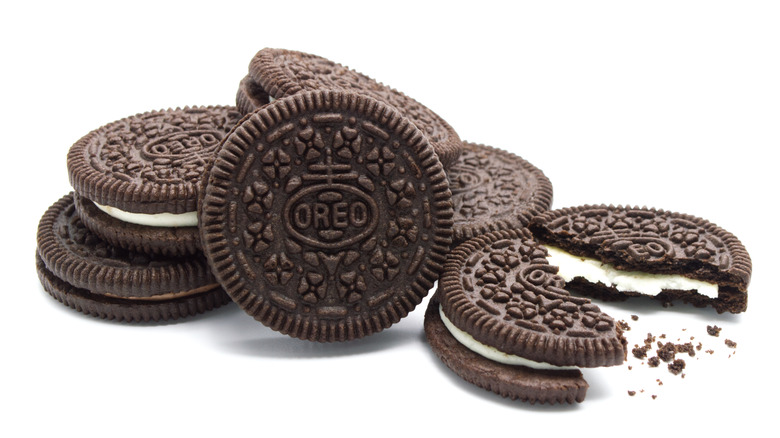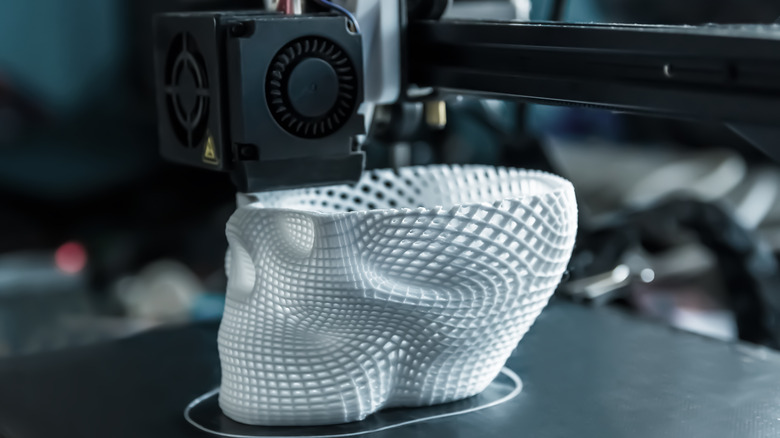Here's Why MIT Engineers Built A Machine To Split Oreos
The Massachusetts Institute of Technology — better known as MIT — is one of the most prestigious universities in the United States. MIT has a long list of notable alumni including astronaut Buzz Aldrin, Richard Feynman from the Manhattan Project, and even "The Bachelor" and "Dancing With The Stars" producer Andrea Wong. More recently Disney Channel fans were pleasantly surprised to discover that singer and actress Bridget Mendler from the popular show "Good Luck, Charlie" is a PhD student at MIT as of 2021. Maybe now everyone should say, "Good luck, Bridget!
MIT is clearly bursting at the seams with talented students both past and present, but this does not mean that all of their research and accomplishments must change the world. Some of these people of high intelligence have devoted their brains to the more average of life's day-to-day experiences, such as the plight of Oreo lovers trying to separate the cream from the cookies.
MIT researchers tested an Oreo's rheology
As many people already know, the cream filling of an Oreo often sticks to just one of the two cookies when pulled apart rather than evenly sticking to both halves of the cookie. In April of 2022, a group of MIT researchers put Oreos into rheology tests. Rheology is the study of the flow and deformation of matter (solids, liquids, or materials with properties of both) when subjected to force and time. In the instance of the Oreo, the force is when people twist the two halves or pull them apart.
To test rheology, scientists use a rheometer. They put an item on the rheometer's base and then lower another plate on top of it and twist it. When researching why the cream usually sticks to one side of the Oreo cookie, even when using a rheometer, the team found that it is due to the manufacturing of the Oreo. In the factory, one cookie is down, the cream goes on, and the second cookie is squashed on top. This short delay before the second cookie is added allows the cream to stick to the first cookie (via MIT News).
Oreo cream is similar to 3D printing materials
The researchers created an "Oreometer" to split Oreos apart using rubber bands and pennies like a rheometer. Owens hoped that the team would find a way to split the cream down the middle, thus keeping cream on both halves of the cookie when pulling it apart. It never happened. Each time, the cream stayed on one side of the cookie (via MIT News).
This experiment was not simply the result of bored college students. Popular Science explains that testing the rheology of Oreos has other scientific applications, particularly relating to 3D printing materials. Author of the study Crystal Owens likens an Oreo's cream filling to materials she uses for 3D printing. "If I say, it's like an Oreo—I put fluid between plates and I rotate them, and that helps me characterize the viscosity [of materials] we use for 3D printing—suddenly people understand what I'm saying." 3D printing materials need to be somewhat pliable in the printer's tubes, but solid enough to hold shape after printing. Oreo cream has the same characteristics. Too bad a 3D printed Oreo would probably not taste the same as a real Oreo.


